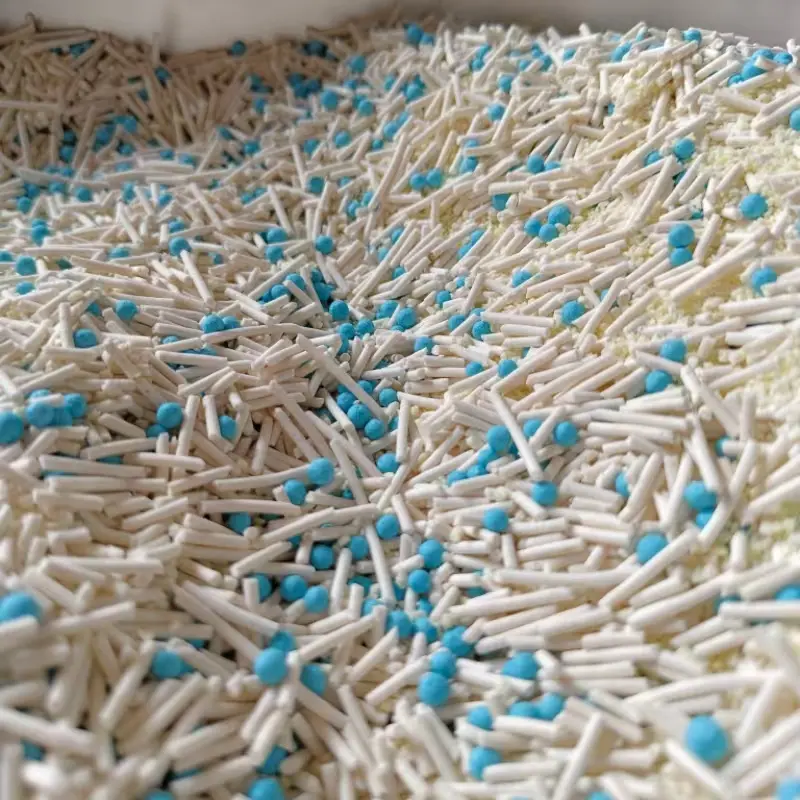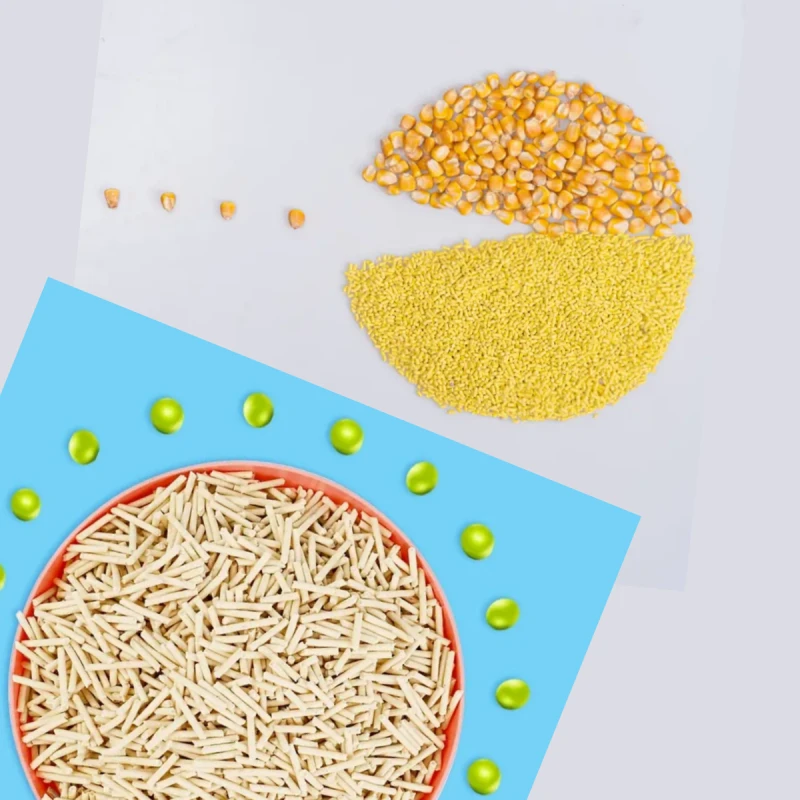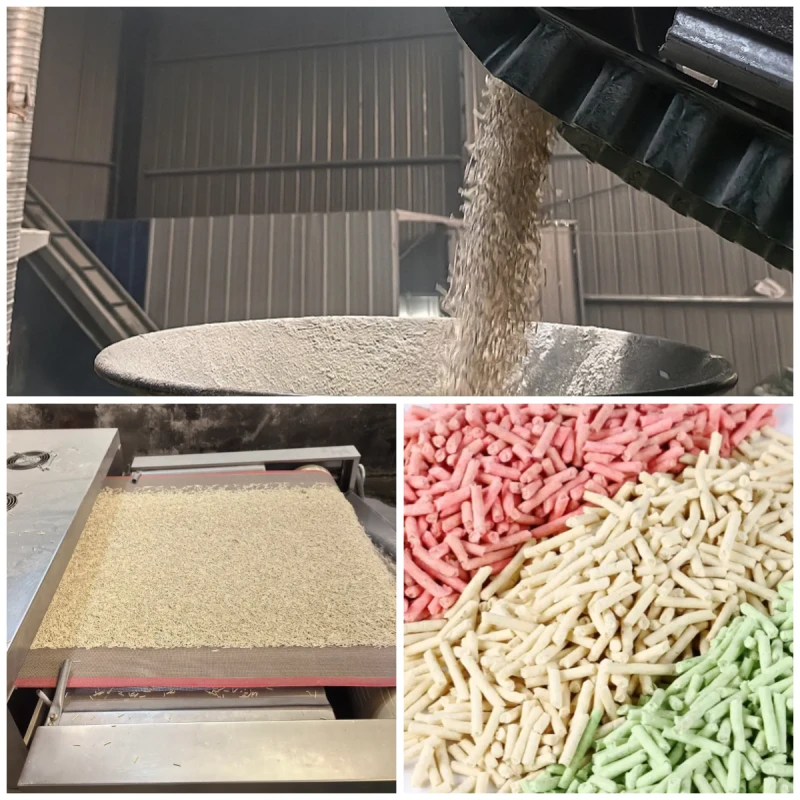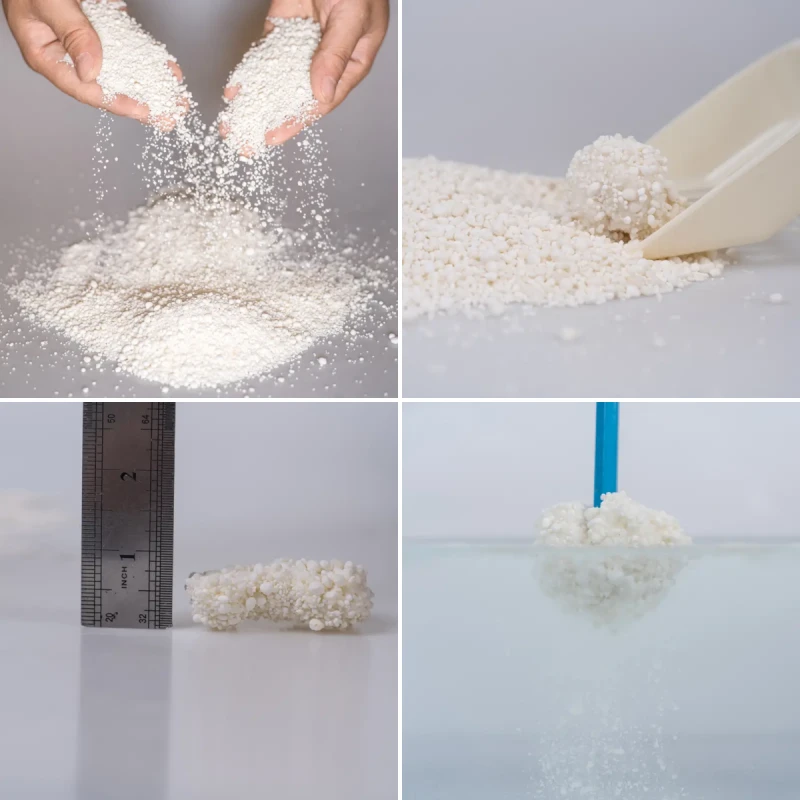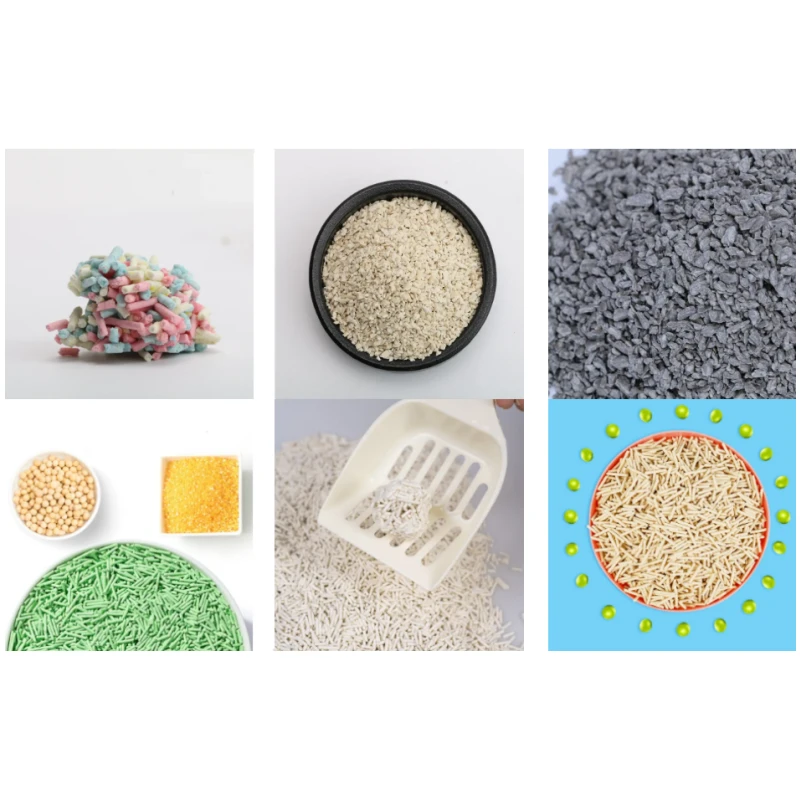Wood pellets have become an increasingly popular choice for cat litter due to their natural, eco-friendly properties and excellent odor control. Made from compressed sawdust, wood pellets are biodegradable, highly absorbent, and produce minimal dust, making them an ideal alternative to traditional clay-based litters. This article will guide you through the process of using wood pellets as cat litter, including the specifications to look for, usage tips, and step-by-step instructions on how to make the most of this natural option.
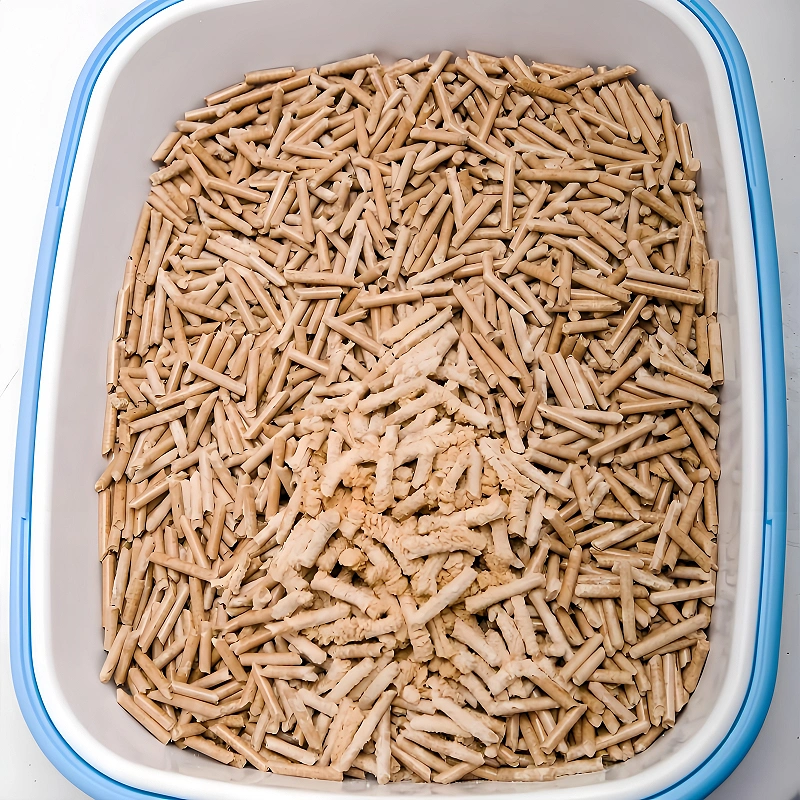
Specifications of Wood Pellets for Cat Litter
When choosing wood pellets for cat litter, it's important to understand the specifications that make them suitable for this purpose. Not all wood pellets are created equal, and selecting the right type can significantly enhance your experience and your cat’s comfort.
1. Size and Diameter
Wood pellets typically come in various sizes, with diameters ranging from 6mm to 8mm (approximately 1/4 inch to 5/16 inch). The smaller diameter pellets are generally preferred for cat litter as they are easier for cats to walk on and break down more effectively when wet.
2. Material
Wood pellets are made from different types of wood, including softwood and hardwood. Softwood pellets, often made from pine, are commonly used for cat litter due to their natural odor-neutralizing properties and pleasant scent. Hardwood pellets, while also effective, tend to be less aromatic and may not clump as well as softwood pellets.
3. Moisture Content
The moisture content of wood pellets is an important factor in their performance as cat litter. Pellets with low moisture content (typically below 10%) are more absorbent and will last longer, as they can take in more liquid before breaking down. High moisture content pellets may break down too quickly, leading to more frequent changes.
4. Density and Durability
Higher density wood pellets are more durable and less likely to disintegrate into dust. Look for pellets that are tightly compressed, as these will hold up better under the weight of your cat and provide longer-lasting litter coverage.
Why Choose Wood Pellets for Cat Litter?
There are several reasons why wood pellets make an excellent choice for cat litter:
1. Eco-Friendly
Wood pellets are biodegradable and made from renewable resources, often using sawdust that would otherwise be discarded. Unlike traditional clay-based litters, which are mined from the earth, wood pellets have a smaller environmental footprint.
2. Odor Control
One of the most significant advantages of wood pellets is their natural ability to neutralize odors. The natural pine scent in softwood pellets is particularly effective at masking unpleasant smells, making your home more pleasant.
3. Low Dust
Wood pellets produce far less dust than clay litters, which is beneficial for both you and your cat. Less dust means a cleaner home environment and reduced respiratory irritation for your cat, especially if they are prone to allergies.
4. High Absorbency
Wood pellets are highly absorbent, capable of soaking up multiple times their weight in liquid. When wet, the pellets break down into sawdust, which can be easily removed, leaving the dry pellets behind to continue absorbing moisture.
5. Cost-Effective
Wood pellets are often more affordable than premium clay litters, especially when purchased in bulk. Their long-lasting nature means you can go longer between litter changes, further saving on costs.The convenience of using pine cat litter is an important factor in choosing it.
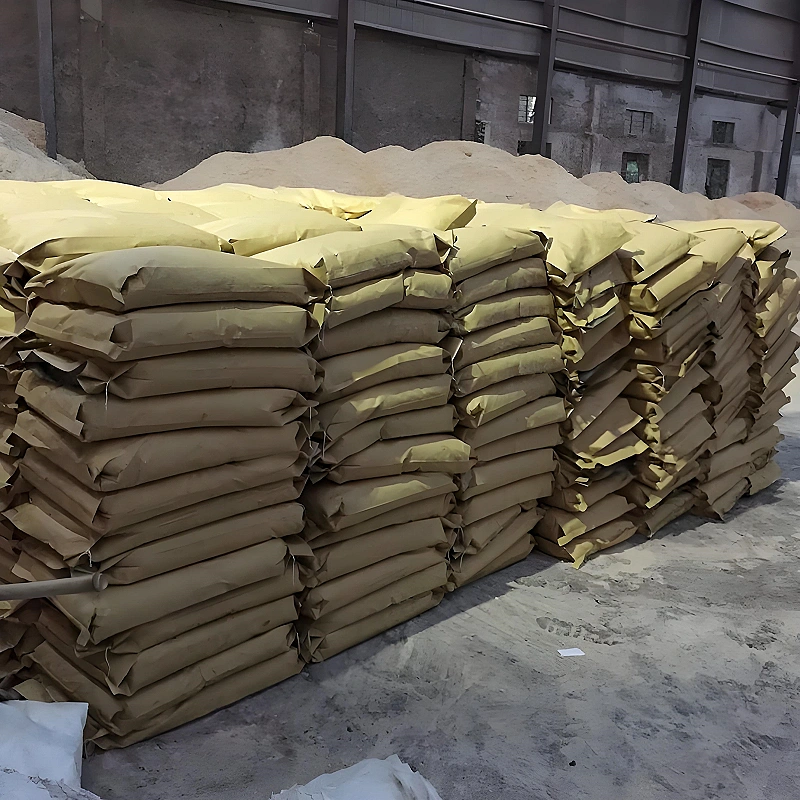
How to Choose the Best Wood Pellets for Cat Litter
Choosing the right wood pellets for cat litter involves considering several factors based on your preferences and your cat's needs.
1. Check the Source of the Pellets
Ensure that the wood pellets are made from natural wood without added chemicals, binders, or adhesives. Pellets intended for heating or other industrial purposes may contain additives that are not safe for pets. Look for pellets specifically labeled as safe for pets or those made from 100% natural wood.
2. Consider the Wood Type
Softwood pellets, especially pine, are often preferred for their odor control properties. If you or your cat prefer a less fragrant option, hardwood pellets might be a better choice. However, softwood is generally more effective at controlling odors and breaking down when wet.
3. Evaluate Absorbency and Durability
As mentioned earlier, low moisture content and high density are key indicators of high-quality wood pellets. These characteristics ensure that the pellets will absorb moisture effectively and last longer before needing to be replaced.
4. Buy in Bulk for Savings
Wood pellets are often sold in large bags or by the ton, which can significantly reduce the cost per pound. Buying in bulk is especially cost-effective if you have multiple cats or prefer not to purchase litter frequently.
5. Test with Your Cat
Cats can be particular about their litter, so it's a good idea to test a small amount of wood pellets before committing to a large purchase. Observe how your cat reacts to the texture and scent. If they seem comfortable and use the litter box without issues, you can proceed with confidence.
Step-by-Step Guide: How to Use Wood Pellets for Cat Litter
Using wood pellets for cat litter is simple and straightforward. Follow these steps to ensure the best results for you and your cat:
1. Prepare the Litter Box
Start by selecting a litter box that is large enough for your cat to move around comfortably. A box with high sides can help contain the sawdust that forms as the pellets break down. Some cat owners prefer to use a sifting litter box, which makes it easier to separate the sawdust from the remaining pellets.
2. Fill the Litter Box with Wood Pellets
Pour a layer of wood pellets into the litter box. The recommended depth is about 1 to 2 inches, depending on your cat’s size and habits. Since wood pellets expand and break down when wet, you don’t need to fill the box as deeply as you would with traditional clay litter.
3. Introduce Your Cat to the New Litter
If your cat is new to wood pellet litter, introduce it gradually. You can start by mixing a small amount of wood pellets with their existing litter, gradually increasing the proportion of pellets over several days. This allows your cat to adjust to the new texture and scent.
4. Monitor and Maintain the Litter Box
As your cat uses the litter box, the wood pellets will absorb moisture and break down into sawdust. Check the litter box daily to remove any solid waste and clumps of sawdust. You can use a scoop to sift out the sawdust, leaving the intact pellets behind.
For a sifting litter box, simply lift the top layer to separate the sawdust from the pellets. The sawdust can be discarded, and the remaining pellets can be reused. Add fresh pellets as needed to maintain the desired depth.
5. Replace the Litter Regularly
Although wood pellets last longer than traditional litter, they will eventually need to be replaced. How often you need to replace the entire contents of the litter box will depend on the number of cats you have and their bathroom habits. Typically, a complete change every 2 to 3 weeks is sufficient for a single cat.
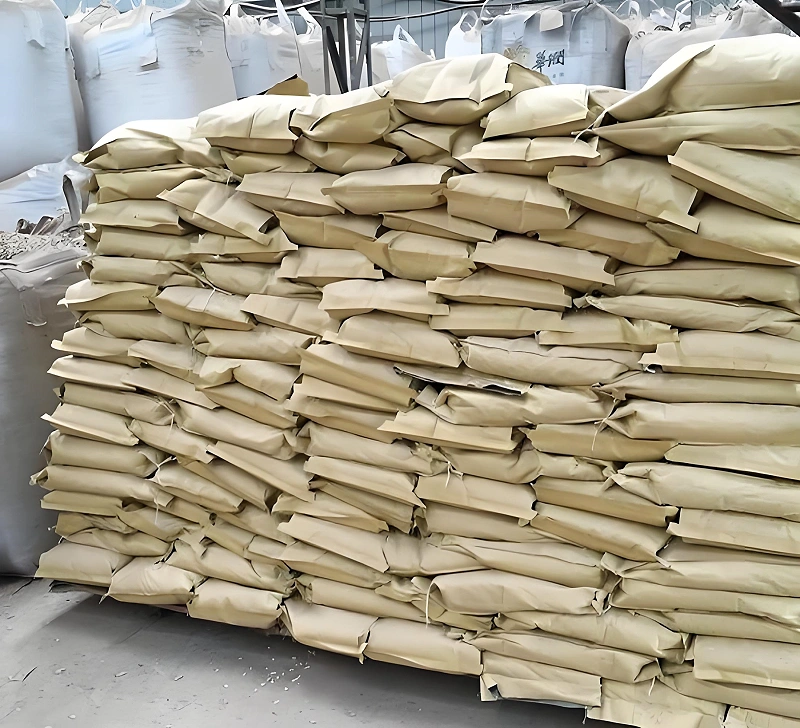
Tips for Using Wood Pellets as Cat Litter
Here are some additional tips to help you get the most out of your wood pellet cat litter:
1. Use a Liner
Using a litter box liner can make cleanup easier, especially when it’s time to replace all the litter. Liners help prevent urine from seeping into the bottom of the box, reducing the need for scrubbing and extending the life of the litter box.
2. Control Odor Naturally
While wood pellets are effective at controlling odor, you can enhance their effectiveness by sprinkling a small amount of baking soda in the litter box. Baking soda is a natural deodorizer that can help neutralize any lingering smells.
3. Compost the Sawdust
If you’re environmentally conscious, consider composting the sawdust that results from using wood pellets as cat litter. While you should not compost cat waste in your garden, the sawdust from unused pellets or clean areas can be added to your compost pile.
4. Keep the Litter Box in a Well-Ventilated Area
To prevent odors from accumulating, place the litter box in a well-ventilated area of your home. Proper ventilation will help keep the air fresh and reduce the risk of lingering smells.
Conclusion
Wood pellets are an excellent alternative to traditional cat litter, offering benefits such as superior odor control, low dust, high absorbency, and environmental friendliness. By choosing the right wood pellets and following the simple steps outlined in this guide, you can provide a comfortable, clean, and eco-friendly litter solution for your cat.
Remember to consider factors like pellet size, material, and moisture content when selecting wood pellets for your cat, and introduce the new litter gradually to ensure a smooth transition. With regular maintenance and care, wood pellet cat litter can be a long-lasting, cost-effective option that keeps both you and your cat happy.
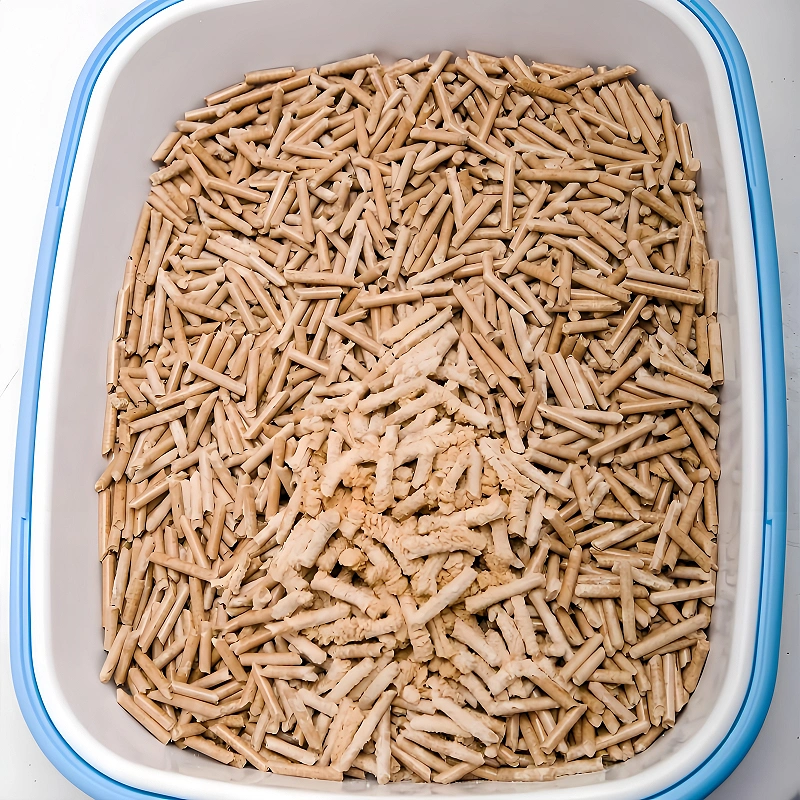
387.webp)



122.webp)
